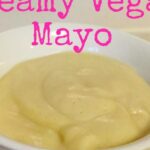Navigating the world of snacks can be a minefield for parents and individuals with allergies. The vibrant colors of a child’s favorite treat, the satisfying crunch of a savory snack – these simple pleasures can be out of reach for those with egg or nut allergies. This guide illuminates a path through this challenge, offering a delightful array of delicious and safe snack options for both kids and adults, emphasizing vibrant flavors and textures that cater to even the most discerning palates. We’ll explore creative presentations, delve into nutritional benefits, and provide simple, step-by-step recipes to empower you to create allergy-friendly treats everyone can enjoy.
From the playful pops of color in a fruit salad to the satisfying savory notes of a perfectly seasoned veggie snack, we’ll explore a diverse range of recipes and ideas. Learn how to carefully read food labels to identify hidden allergens and understand the crucial importance of avoiding cross-contamination. This isn’t just about avoiding allergens; it’s about creating a world of culinary possibilities where everyone can participate in the joy of snack time.
Nut-Free and Egg-Free Snack Recipes for Adults

Savory and sweet snacks, free from nuts and eggs, offer a delicious and safe alternative for those with allergies or dietary restrictions. These recipes provide flavorful and satisfying options, utilizing readily available ingredients. The nutritional information provided helps to make informed choices about your dietary intake.
Savory Nut-Free and Egg-Free Snack Recipes for Adults
These five recipes offer a variety of flavors and textures, perfect for a quick bite or a more substantial snack. Each recipe emphasizes simple preparation and readily available ingredients.
- Spicy Roasted Chickpeas: A crunchy and flavorful snack. Preheat oven to 400°F (200°C). Toss one can (15 ounces) of drained and rinsed chickpeas with 1 tablespoon olive oil, 1 teaspoon chili powder, ½ teaspoon cumin, ½ teaspoon smoked paprika, and salt and pepper to taste. Spread on a baking sheet and roast for 20-25 minutes, stirring halfway through, until crispy. The vibrant red-orange hue of the spices contrasts beautifully with the creamy beige of the chickpeas, creating a visually appealing snack.
- Sun-dried Tomato and Olive Tapenade Crostini: A sophisticated and satisfying snack. Combine ½ cup sun-dried tomatoes (oil-packed, drained), ¼ cup Kalamata olives (pitted and roughly chopped), 2 tablespoons olive oil, 1 clove garlic (minced), and a pinch of black pepper in a food processor. Process until a coarse paste forms. Spread on toasted baguette slices (ensure they are nut-free). The deep red of the sun-dried tomatoes against the dark purple-black of the olives and the golden brown of the bread creates a striking color palette.
- Edamame with Sea Salt: A simple yet elegant snack. Steam or microwave one bag (16 ounces) of shelled edamame until tender. Toss with a pinch of sea salt. The bright green of the edamame is visually appealing, especially when sprinkled with the glistening white sea salt.
- White Bean and Rosemary Dip with Vegetable Sticks: A healthy and flavorful dip. Combine one can (15 ounces) of cannellini beans (drained and rinsed), ¼ cup olive oil, 1 tablespoon fresh rosemary (chopped), 2 cloves garlic (minced), and salt and pepper to taste in a food processor. Process until smooth. Serve with an assortment of colorful raw vegetables such as carrots, celery, and bell peppers. The creamy white dip contrasts beautifully with the vibrant colors of the raw vegetables.
- Black Bean Salsa with Baked Tortilla Chips: A zesty and refreshing snack. Combine one can (15 ounces) of black beans (drained and rinsed), ½ cup corn kernels (fresh or frozen), ½ red bell pepper (diced), ¼ red onion (finely chopped), 2 tablespoons chopped cilantro, 1 lime (juiced), and salt to taste. Serve with baked tortilla chips (ensure they are nut-free). The deep black of the beans contrasts with the vibrant red and yellow of the bell pepper and corn, creating a visually exciting snack.
Sweet Nut-Free and Egg-Free Snack Recipes for Adults
These three recipes focus on simple preparations and healthy ingredients, offering delightful sweet treats without compromising on nutritional value.
- Baked Apples with Cinnamon and Oats: A warm and comforting snack. Core apples (such as Granny Smith or Honeycrisp) and fill the cavity with a mixture of rolled oats, cinnamon, a drizzle of maple syrup, and a sprinkle of raisins. Bake at 350°F (175°C) for 20-25 minutes, until tender. The warm, golden-brown apples contrast beautifully with the darker brown of the cinnamon and oats.
- Banana “Nice” Cream: A refreshing and healthy frozen dessert. Blend frozen bananas until smooth and creamy. For added flavor, you can add a tablespoon of cocoa powder for a chocolate version, or a few drops of vanilla extract. The creamy texture and pale yellow color of the banana “nice” cream is visually appealing, especially with the addition of cocoa powder for a rich brown color.
- Coconut Yogurt with Berries and Seeds: A simple and nutritious snack. Top plain coconut yogurt with your favorite berries (strawberries, blueberries, raspberries) and a sprinkle of chia seeds or sunflower seeds. The creamy white yogurt contrasts with the vibrant colors of the berries and the small, dark seeds, creating a visually attractive snack.
Nutritional Comparison of Nut-Free and Egg-Free Snacks
Comparing the Spicy Roasted Chickpeas and the White Bean and Rosemary Dip (savory) with the Baked Apples with Cinnamon and Oats and the Banana “Nice” Cream (sweet) reveals interesting nutritional differences.
| Snack | Protein (g) | Fiber (g) | Healthy Fats (g) | Sugar (g) |
|---|---|---|---|---|
| Spicy Roasted Chickpeas | 7-8 | 6-7 | 3-4 | 1-2 |
| White Bean and Rosemary Dip | 6-7 | 5-6 | 5-6 | 1-2 |
| Baked Apples with Cinnamon and Oats | 3-4 | 4-5 | 2-3 | 10-12 |
| Banana “Nice” Cream | 2-3 | 3-4 | 1-2 | 15-18 |
The savory options are higher in protein and fiber, contributing to satiety and digestive health. The sweet options provide natural sugars and antioxidants from the fruit, but are higher in overall sugar content. Choosing a balance of both savory and sweet options allows for a diverse nutritional intake. Note that these are approximate values and can vary depending on specific ingredients and portion sizes.
Dietary Considerations and Allergen Awareness
Creating safe and delicious snacks for individuals with allergies requires a keen understanding of common allergens and meticulous attention to detail throughout the entire process, from ingredient selection to preparation and serving. Ignoring these considerations can have serious health consequences. This section will highlight the crucial aspects of allergen awareness in the context of nut-free and egg-free snack preparation.
The importance of careful ingredient selection cannot be overstated when preparing snacks for individuals with allergies. Many common snack ingredients are potential allergens, triggering severe reactions in susceptible individuals. These include, but are not limited to, peanuts, tree nuts (almonds, walnuts, cashews, etc.), eggs, milk, soy, wheat, fish, and shellfish. Even seemingly innocuous ingredients can contain hidden allergens, making careful label reading an absolute necessity.
Identifying Potential Allergens on Food Labels
Reading food labels is the first line of defense against accidental allergen exposure. Manufacturers are required to clearly list all ingredients, including potential allergens, on their products. Look for specific allergen names, but also be aware of hidden sources. For instance, “natural flavors” or “modified food starch” may contain allergens. Cross-referencing the ingredient list with a known allergen list is helpful. If you are unsure about an ingredient, contact the manufacturer directly for clarification. Pay close attention to the “May contain” statements, indicating potential cross-contamination during processing. A visually appealing label might distract from this crucial information. Imagine a vibrant package of cookies; the bright colors should not overshadow the vital allergen information printed in smaller font.
Risks Associated with Cross-Contamination
Cross-contamination occurs when allergens transfer from one food to another. This can happen through direct contact, shared equipment, or airborne particles. Preparing nut-free and egg-free snacks in a kitchen that also handles nuts or eggs poses a significant risk. Even traces of allergens can trigger a reaction in sensitive individuals. For example, imagine preparing a batch of egg-free muffins in a bowl that previously held scrambled eggs. Residual egg proteins could remain in the bowl, leading to cross-contamination. Similarly, using the same cutting board for both nuts and nut-free snacks could lead to an allergic reaction. To mitigate this risk, dedicated equipment, utensils, and preparation surfaces should be used exclusively for nut-free and egg-free snacks. Thorough cleaning and sanitizing between uses are crucial. Visualize a meticulously clean workspace, with separate cutting boards, bowls, and utensils clearly labeled and organized to prevent any accidental contact.
Creating delicious and safe snacks for those with egg and nut allergies doesn’t have to be daunting. With a little creativity and careful planning, you can craft a vibrant and satisfying snack experience for everyone. Remember, the key is in careful ingredient selection, understanding food labels, and employing safe food handling practices to avoid cross-contamination. By embracing the recipes and tips provided, you can confidently navigate snack time, ensuring everyone enjoys delicious, allergy-friendly treats. Let the vibrant colors and exciting flavors of these nut-free and egg-free snacks bring joy to your table!
Quick FAQs
What are some common signs of a nut allergy reaction?
Common signs include hives, itching, swelling of the face, lips, or tongue, difficulty breathing, and vomiting. Severe reactions can be life-threatening.
Can I use egg substitutes in all recipes?
Not always. The success of an egg substitute depends on the recipe. Some work well as binding agents, while others provide moisture. Experimentation might be needed.
How long can I store homemade nut-free and egg-free snacks?
Storage times vary depending on the snack. Generally, store in airtight containers in the refrigerator for optimal freshness. Check individual recipe guidelines.
Are all commercially available “nut-free” products truly nut-free?
While manufacturers strive for nut-free production, cross-contamination is a risk. Always check labels carefully and be aware of potential risks.


